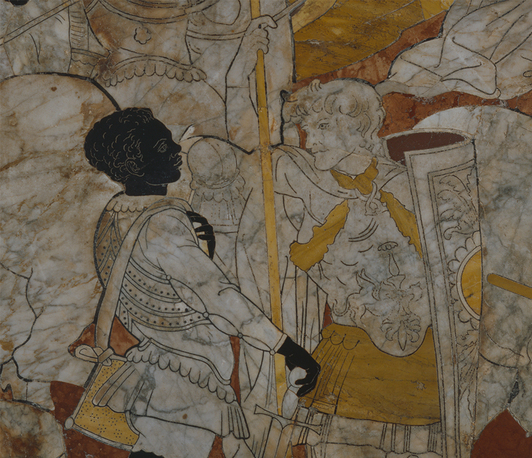Black and White in Marble: an African Soldier for the Floor of Siena Cathedral
Research Seminar
- Date: Nov 16, 2022
- Time: 02:30 PM - 04:30 PM (Local Time Germany)
- Speaker: Cecilia Mazzocchio
- Location: Villino Stroganoff, Via Gregoriana 22, 00187 Rome
- Contact: john.rattray@biblhertz.it

This research seminar explores these issues in
relation to the African soldier in the story of Story of Jephthah
(1481-1483) in the fifteenth-century marble inlay for the floor of Siena cathedral. The
brown serpentine used to represent the soldier’s skin emerges prominently from
the vast sea of white figures that
animate the rest of scene. Beyond contrast and chromatic distinction, brown
serpentine is also deployed to indicate the soldier’s alterity. Thus, playing
on the stone’s embodied qualities, the mimetic association between ‘black
marble’ and black skin enriches
the figure’s visual complexity. Interrogating the soldier’s blackness, both
material and symbolic, offers the chance to explore how difference and ‘race’
were interpreted during the second half of the fifteenth century in the Tuscan
city of Siena.
Cecilia Mazzocchio is a PhD student in the history of art at St Andrews University. Her doctoral project, funded by the SGSAH AHRC Doctoral Training Partnership, explores the impact of cross-cultural exchanges on Siena’s artistic heritage, as well as the mobility of people, objects and knowledge between this Tuscan centre and the wider world, namely Mongol China and Christian Ethiopia (1300-1492). Within this framework, Cecilia is particularly interested in how the ‘other’ was understood and visualised by the Sienese community, in an age prior to the development of a European selfhood and distinctions based on ‘race’ or skin colour.
Scientific Organization: Lise Meitner Group